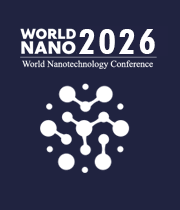Environmental Risk Assessment
Environmental risk assessment (ERA) is an important tool for assessing the potential environmental risks posed by nanotechnology. It is a process used to identify, analyze, and evaluate the potential hazards of Nanobiotechnology and nanotechnologies to human health and the environment. ERA is used to identify the potential impacts of Nanobiotechnology and nanotechnologies on the environment, and to assess the potential risks posed by their use and release. ERA is a comprehensive process that considers all aspects of the production, use, and disposal of Nanobiotechnology and nanotechnologies. It includes an assessment of the potential environmental, health, and safety impacts of both production and use of Nanobiotechnology and nanotechnologies. The process begins with an evaluation of the material and its potential effects on the environment. This is followed by an evaluation of the potential impacts of the Nanobiotechnology and nanotechnologies on human health and safety, as well as their impacts on the environment. The ERA process also includes an assessment of the potential risks associated with the release of Nanobiotechnology and nanotechnologies into the environment.

Harry Ruda
University of Toronto, Canada
Raman Singh
Monash University, Australia
Paulo Cesar De Morais
Catholic University of Brasilia, Brazil
Xiao Hong Nancy Xu
Old Dominion University, United States
S V A R Sastry
Harcourt Butler Technical University, India
Vinayak Adimule
Angadi Institute of Technology and Management, India



Title : 40,000 implants in humans and no failure: The impact of nanomedicine
Thomas J Webster, Hebei University of Technology, China
Title : Cellulose-derived biochar modified with iron oxide and ZnO nanoparticles by a novel one-step pyrolytic method for removal of emerging contaminants from water
Rashad Al Gaashani, Hamad Bin Khalifa University, Qatar
Title : Harnessing the unique properties of engineered nanostructures for sensing
Harry Ruda, University of Toronto, Canada
Title : Circumventing challenges in developing CVD graphene on steels for extraordinary and durable corrosion resistance
Raman Singh, Monash University, Australia
Title : Nano DAP augments productivity, phosphorus use efficiency, and profitability of spring wheat in India
Binaya Kumar Parida, Coromandel International Ltd, India
Title : Lipid nanoparticles formulations: From bench scale to industrial scale
Mohammad A Obeid, RAK Medical and Health Sciences University, United Arab Emirates